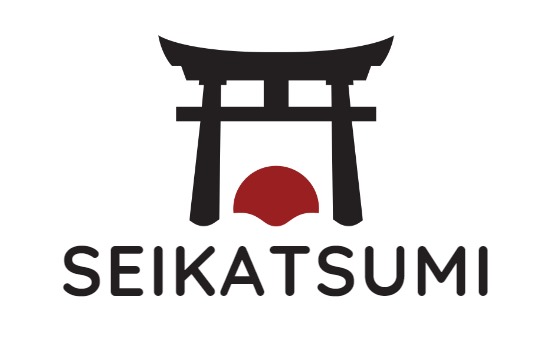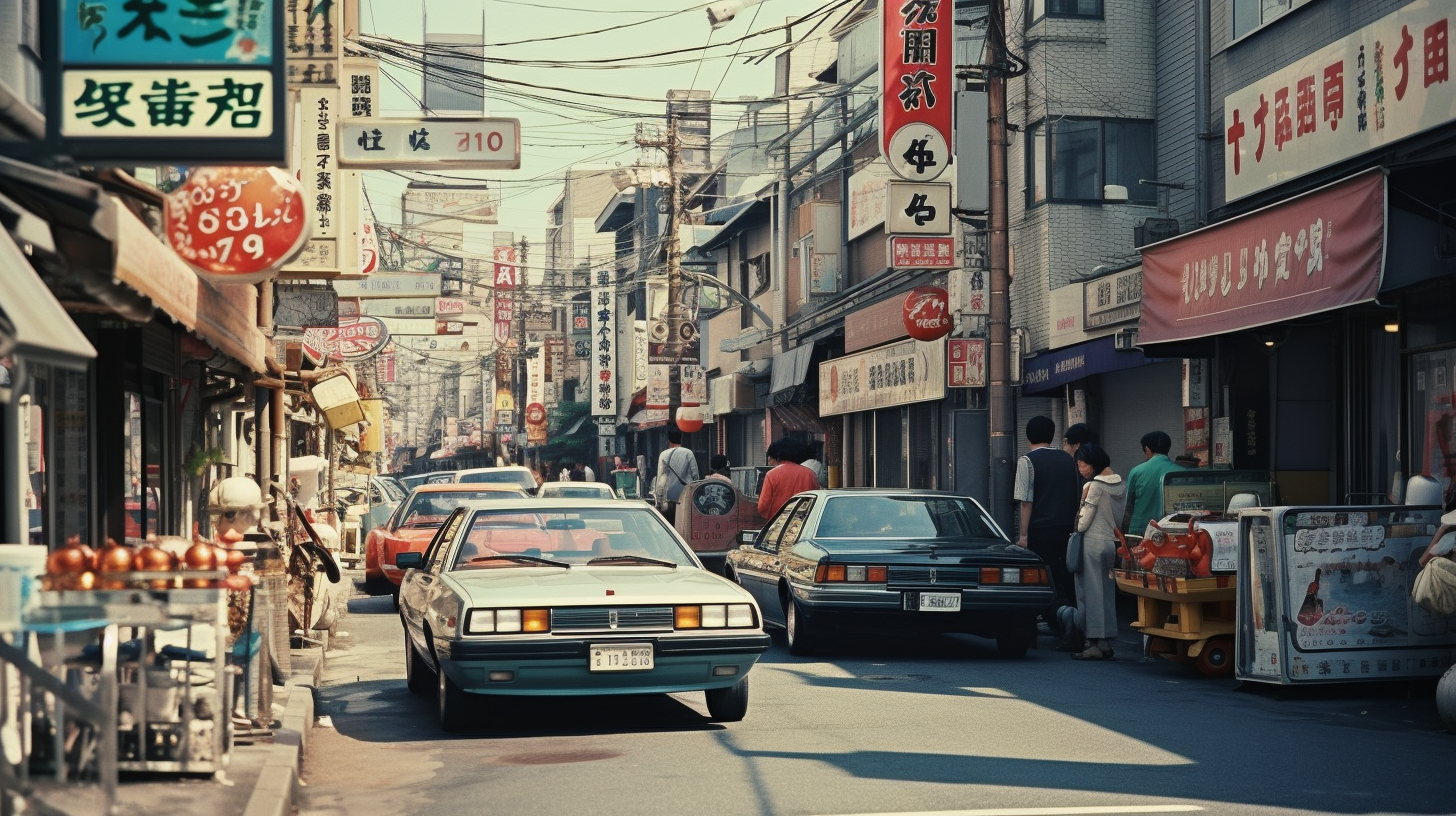The 90s Japan aesthetic is a unique cultural phenomena that still captivates our imagination today. It was a period marked by a vivid mix of bold fashion statements, innovative technology, and a groundbreaking pop culture that shaped not just Japan, but also had a significant influence worldwide. We think of vibrant street life, iconic anime, and the rise of tech gadgets as the essence of this colorful decade.
As we explore this era, we find ourselves immersed in a world where traditional Japanese values were being merged with the daring new concepts of modernity. From the eccentric styles seen in the bustling Harajuku district to the emergence of distinct subcultures, the fabric of 90s Japan was stitched with innovation and rebellion against the norm. Whether it was through the attitude-laden Gyaru trend or the cute and quirky accessories sported by youths, each element reflected a piece of the era’s spirit.
Our collective fascination isn’t just with the fashion or the technology, it’s also about the attitude that the 90s Japan aesthetic embodies—a blend of fearlessness and a playful approach to self-expression. It’s a rich canvas that we’re still decoding, finding inspiration for contemporary culture and style.
Cultural Context of 90s japan aesthetic
When exploring the 90s Japan aesthetic, we’re looking at a vibrant period marked by distinctive shifts in economy and culture.
Economic Growth and Bubble Burst

In the early 1990s, Japan was feeling the effects of the economic bubble’s burst after the booming ’80s. The period before was characterized by rapid economic growth where capital was plentiful and consumer spending was high. Our cities, particularly Tokyo, became hubs for avant-garde fashion and a flourishing pop culture. The sudden shift, however, didn’t immediately erase the 90s Japan aesthetic; it evolved as the younger generation reacted to the wider economic downturn.
Influences from the West
The ’90s in Japan were also typified by a growing interest in Western culture. You could see the blending of styles on the streets; for example, the rise of Shoichi Aoki’s FRUiTS magazine showcased unique fashions that mixed traditional Japanese looks with Western-inspired outfits. We embraced icons from music, film, and fashion, filtering them through our own cultural lens to create something uniquely Japanese.
Fashion and Style

When we reminisce about the 90s japan aesthetic, vivid images of eclectic Harajuku styles and polished designer fashions immediately spring to mind. This era was a fascinating mix of rebellion, innovation, and tradition that reshaped Japan’s fashion landscape.
Street Fashion

Japan’s streets became the ultimate canvas for self-expression in the ’90s. Harajuku’s Takeshita Street was the epicenter of this cultural explosion, where bold and non-conformist aesthetics reigned supreme. Individuals took inspiration from pop culture influences, crafting looks that were both vibrant and ever-evolving. Elements like oversized sweatshirts paired with loose socks, and mixed patterns defined this iconic era—and its influence still echoes in today’s style trends.
Hey you! are you interested in fashion in general? Then you have to take a look at the following article: You definitely can’t miss it!
Designer Labels

During the ’90s, Japanese high-fashion labels carved out an indelible niche in global fashion. Designers like Rei Kawakubo of Comme des Garçons and Yohji Yamamoto rose to international fame for their avant-garde and minimalist designs. They challenged fashion norms with their innovative cuts, dark color palettes, and asymmetrical elements, solidifying Japan’s position as a formidable fashion force on the world stage.
School Uniforms
Even school uniforms—a symbol of conformity—were not left untouched by the ’90s renaissance. Students in Japan customized their seifuku (school uniforms) to reflect their individuality, subtly pushing against societal expectations. Minor alterations such as shortening skirts, wearing baggy pants, or adding accessories allowed youth to embrace the 90s japan aesthetic within the boundaries of school rules.
Music and Entertainment
When we reminisce about the 90s japan aesthetic, we instantly think of the vibrant music scene that defined an era. Exciting genres were flourishing, each leaving a lasting impact on the cultural landscape.
J-Pop Evolution
The 90s marked an era of J-Pop that shaped the modern music scene in Japan. This decade was punctuated by the emergence of J-Pop idols and the rise of fashion magazines that broadened the genre’s appeal. Bands and solo artists like Hikaru Utada and Namie Amuro became household names, with songs that combined catchy melodies with the contemporary rhythms of the West. The blend of traditional Japanese music with pop elements also forged a distinct sound that today still resonates with fans globally.
City Pop Resurgence

During the 90s, a nostalgic wave rekindled fascination for City Pop, a genre that highlighted Japan’s metropolitan allure through music. It resonated through the bustling streets and neon lights, capturing the essence of Japanese city life with its mellow yet electric tunes. The genre’s smooth grooves and funk-influenced basslines experienced a revival not only in Japan but also internationally, thanks to the internet and music sampling in new-age genres.
Techno and Rave Culture

Lastly, Techno and Rave culture burst into the 90s Tokyo nightlife. Adopting and adapting styles from European rave scenes, Japanese DJs and producers put their unique spin on the music, drawing crowds to underground clubs. Pulsating beats and the communal spirit of dance became synonymous with the freedom and rebelliousness of youth culture at the time, making it an integral part of the 90s japan aesthetic.
Film and Television

As we explore the 90s Japan aesthetic, it’s essential to look at the era’s film and television landscape. This period was marked by an array of influential directors, a notable increase in tokusatsu productions, and a significant anime and manga boom that shaped Japanese pop culture globally.
Influential Films and Directors

The 1990s in Japan were punctuated by groundbreaking cinema, with directors like Ryosuke Hashiguchi who brought LGBT concerns to the forefront with works like Like Grains of Sand. Additionally, the legendary Akira Kurosawa astonished audiences with visually striking films such as Dreams, while Takeshi Kitano forged a distinctive storytelling path with titles like Hana-Bi, heralding a distinct style that left a lasting impression on the industry.
Tokusatsu Boom
- Notable Tokusatsu Series:
- Kamen Rider
- Super Sentai
- Ultraman Tiga
During the ’90s, the tokusatsu genre, with its unique blend of special effects and live-action drama, witnessed a renaissance. Television series such as Super Sentai and Kamen Rider became household names, and new entries like Ultraman Tiga infused fresh life into long-standing franchises.
Anime and Manga Boom
| Year | Milestone Anime | Noteworthy Manga |
|---|---|---|
| 1992 | Sailor Moon | Yu Yu Hakusho |
| 1995 | Neon Genesis Evangelion | Ghost in the Shell |
| 1997 | Pokémon | One Piece |
The ’90s also saw a surge in anime and manga’s popularity, reaching audiences far beyond Japan. Series like Sailor Moon and Neon Genesis Evangelion broke new ground in storytelling and animation techniques. Furthermore, manga series such as One Piece began their journey to becoming worldwide phenomena, contributing significantly to the distinctive 90s Japan aesthetic.
Technology and Gaming
When we reminisce about the 90s japan aesthetic, technology and gaming are indisputably at the forefront. These themes not only defined the era but also shaped our global pop culture and entertainment.
Console Wars
In the ’90s, Sony PlayStation and Nintendo 64 stepped onto the battlefield, changing our living rooms into gaming hubs. These systems brought us iconic titles like “Final Fantasy VII” and “The Legend of Zelda: Ocarina of Time,” which are cherished to this day.
Portable Gadgets

It’s impossible to talk about this era without mentioning the Game Boy, a handheld device that became nearly synonymous with portable gaming. Alongside, the Tamagotchi took the world by storm, becoming a quirky yet beloved part of our daily carry.
Arcade Culture

No weekend was complete without a visit to the arcades, vibrant places where games like “Street Fighter II” and “Dance Dance Revolution” saw fierce, yet friendly competitions. The aesthetic of neon lights and electronic sounds was an unforgettable part of our youth.
Architecture and Design
The “90s Japan aesthetic” reflects a transformative period where traditional elements fused effortlessly with futuristic ideas. We explore the impact of this fusion mainly through architecture and design.
Metabolist Movement
The Metabolist Movement, though initiated in the 1960s, continued to influence Japanese architecture in the 1990s. We saw buildings with modular designs and organic forms. Structures like the Nagakin Capsule Tower showcased the movement’s ideals with its detachable capsules that reflected a high-tech vision of living, evoking the concept of a living organism within urban architecture.
Urban Spaces

During the 90s, our urban spaces were reimagined as sleek, efficient, and often infused with a sense of minimalism. Tokyo’s cityscape was dotted with buildings characterized by clean lines and simplicity, reflecting Japan’s push towards modernization yet anchoring strong ties to Zen-like tranquility within busy city lives.
Interior Design
In interior design, we embraced a minimalist approach that prioritized functionality without compromising on aesthetic appeal. Rooms often featured a combination of natural materials such as wood and stone, and embraced natural light, creating serene and harmonious spaces. This design approach was a direct interpretation of traditional Japanese values through a modern lens, resonating with the minimalist trends that were prominent worldwide.
Graphic Design and Advertising
In the 1990s, we witnessed a unique fusion of innovation and tradition in Japan’s graphic design and advertising spheres. Let’s explore how the 90s Japan aesthetic influenced various aspects of this creative domain.
Poster Art

Posters from the 90s era in Japan were not merely informational; they were artistic statements embracing both minimalism and expressive typography. These pieces often featured a blend of traditional Japanese elements with modern design principles, consisting of vivid colors and experimental layouts. For instance, graphics from the New York area significantly influenced Japanese designers, especially in their poster creations.
Corporate Branding
Corporate branding in 90s Japan was characterized by a clear, cutting-edge aesthetic that communicated brand identity efficiently. Major corporations became trendsetters, embracing a minimalist yet bold approach in their branding efforts. They incorporated elements from both Western and Eastern design philosophies to resonate globally, leading Japan to emerge as a major industrial power. The design of this period was also marked by an evolution into a major profession, serving the various needs of the booming Japanese economy—reflecting the blend of postwar influences and national growth.
Subcultural Visuals
The 90s era also saw the rise of unique subcultural visuals, which went hand in hand with Japan’s underground music scenes and youthful fashion trends. Subcultures like the vibrant Harajuku street style took advantage of graphic design to express their identities, often through zines, stickers, and icons. These visuals embraced elements of the popular “kawaii” culture, which celebrates cuteness and permeated even the most niche areas, from recognizable characters like Pikachu and Hello Kitty to everyday handwriting and fashion styles.
Literature and Art

When we think about the 90s Japan aesthetic, we’re immediately drawn to its diverse creative output, especially in literature and art, which saw traditional forms blending with postmodern innovation.
Novel Trends
The 1990s in Japan saw an interesting shift in literature. Younger authors like Haruki Murakami gained international fame by infusing contemporary Japanese fiction with themes of isolation and surrealism. His works, such as “The Wind-Up Bird Chronicle,” reflect the introspective nature of society during this time. Additionally, the decade was marked by the rise of female authors such as Banana Yoshimoto, whose novel “Kitchen” exemplified the minimalist style, focusing on the peculiarities of everyday life and the treatment of loss and love.
Contemporary Art
In the realm of contemporary art, the 90s Japan aesthetic was densely populated with innovative expressions. Artists like Takashi Murakami and his theory of Superflat, which critiqued consumer culture and the legacy of post-war Japanese art, became highly influential. Murakami’s works often featured bold colors and flat surfaces, merging pop culture with otaku subculture. This period also saw the growth of art collectives like TeamLab, which merged technology with traditional art, offering immersive experiences that rejected conventional art forms for interactive digital installations.
Frequently Asked Questions
What defines the 90s Japan Aesthetic in terms of fashion?
The ’90s Japan Aesthetic’ in fashion is characterized by the vibrant and eclectic styles emerging from Harajuku, Tokyo. It includes bold streetwear, mix-and-match patterns, and the influence of manga and anime on clothing, creating a unique and expressive look.
How did technology contribute to the 90s Japan Aesthetic?
Technological advances in the ’90s, particularly in the video game industry with the rise of Nintendo and Sony, played a significant role. The gaming culture, along with the increasing popularity of anime and manga, influenced fashion, art, and even the overall visual landscape of Japan during that time.
What were the major pop culture phenomena of the 90s Japan Aesthetic?
Iconic pop culture phenomena include the global obsession with Pokémon and the Tamagotchi craze. Additionally, characters like Hello Kitty and the Kawaii culture became emblematic, contributing to the adorable and playful aspects of the aesthetic.
How does the 90s Japan Aesthetic continue to influence contemporary trends?
The ’90s Japan Aesthetic’ continues to influence modern trends through nostalgia and revivals. Elements such as bold colors, oversized silhouettes, and references to iconic anime and video games are often incorporated into today’s fashion, music, and pop culture, showcasing the enduring impact of the ’90s era.
If you liked this blog post about 90s japan aesthetic, don’t forget to leave us a comment down below! Write us what fascinates you so much about the 90s japan aesthetic!







Wow, this blogger is seriously impressive!